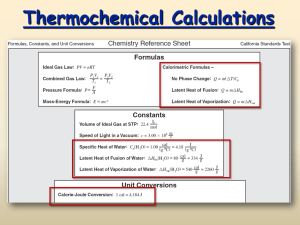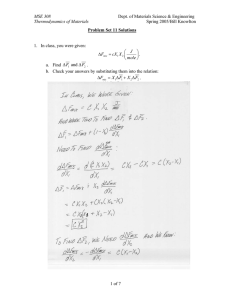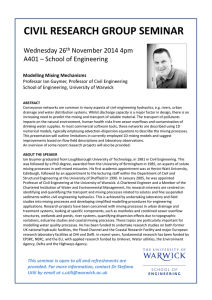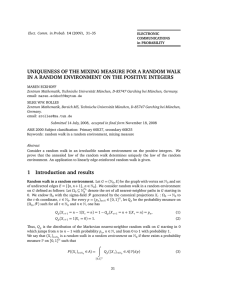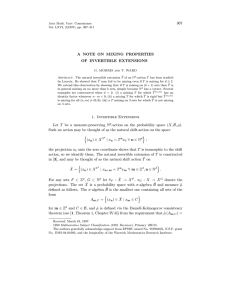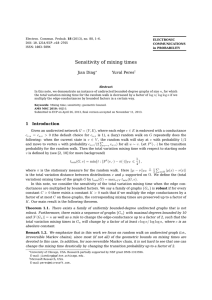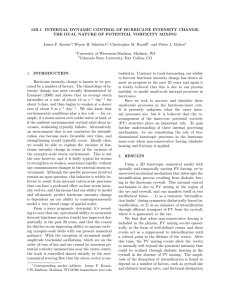MSE 308 Thermodynamics of Materials Dept. of Materials Science & Engineering
advertisement
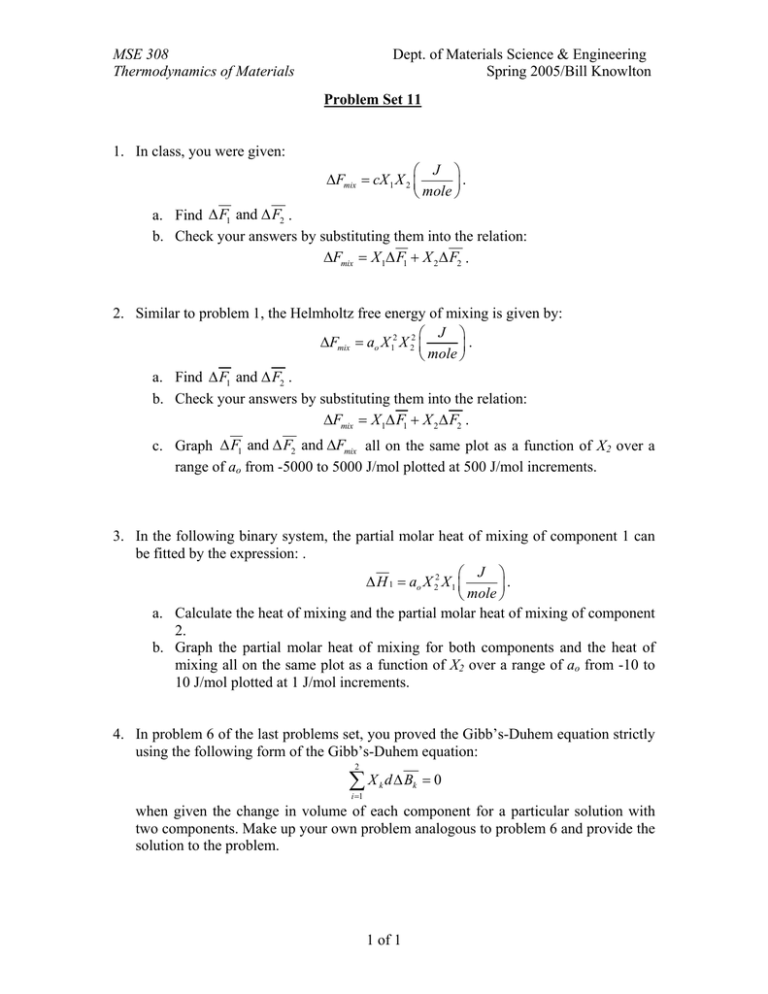
MSE 308 Thermodynamics of Materials Dept. of Materials Science & Engineering Spring 2005/Bill Knowlton Problem Set 11 1. In class, you were given: ⎛ J ⎞ ∆Fmix = cX 1 X 2 ⎜ ⎟. ⎝ mole ⎠ a. Find ∆ F1 and ∆ F2 . b. Check your answers by substituting them into the relation: ∆Fmix = X 1∆ F1 + X 2 ∆ F2 . 2. Similar to problem 1, the Helmholtz free energy of mixing is given by: ⎛ J ⎞ ∆Fmix = ao X 12 X 22 ⎜ ⎟. ⎝ mole ⎠ a. Find ∆ F1 and ∆ F2 . b. Check your answers by substituting them into the relation: ∆Fmix = X 1∆ F1 + X 2 ∆ F2 . c. Graph ∆ F1 and ∆ F2 and ∆Fmix all on the same plot as a function of X2 over a range of ao from -5000 to 5000 J/mol plotted at 500 J/mol increments. 3. In the following binary system, the partial molar heat of mixing of component 1 can be fitted by the expression: . ⎛ J ⎞ ∆ H 1 = ao X 22 X 1 ⎜ ⎟. ⎝ mole ⎠ a. Calculate the heat of mixing and the partial molar heat of mixing of component 2. b. Graph the partial molar heat of mixing for both components and the heat of mixing all on the same plot as a function of X2 over a range of ao from -10 to 10 J/mol plotted at 1 J/mol increments. 4. In problem 6 of the last problems set, you proved the Gibb’s-Duhem equation strictly using the following form of the Gibb’s-Duhem equation: 2 ∑X i =1 k d ∆ Bk = 0 when given the change in volume of each component for a particular solution with two components. Make up your own problem analogous to problem 6 and provide the solution to the problem. 1 of 1




